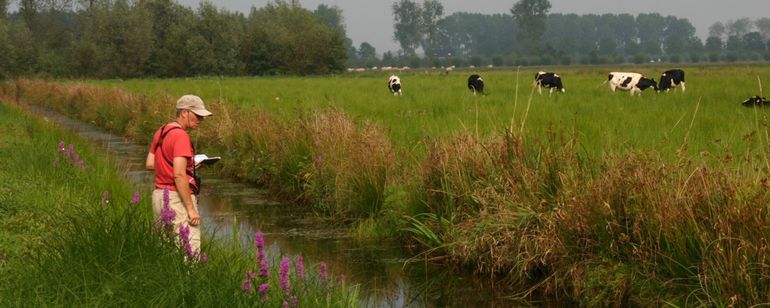Discussions about nature conservation often focus on legal issues. These problems arise because we have not properly organized nature monitoring and policy evaluation in the Netherlands. Published in 2021 Review policies related to nature and biodiversity It turns out that little or no documented data can be provided about the effectiveness of nature policy. We have a lot of knowledge about nature, but we rarely use it in nature policy and management.
Policy evaluations are designed such that we cannot make any statements about the effectiveness of efforts. In addition, scientific studies on policy impacts are not included in policy evaluations. It is therefore possible that ruffs disappeared from the Netherlands while farmers and nature managers focused largely on grassland management. This is not about the details: Audit court For example, it calculated that the amount of annual support for meadowbird management rose from 4.2 million to 33.4 million between 2001 and 2020, while the number of breeding pairs fell by half in the same period.
Models rather than measurements
When developing and evaluating policies, measures are taken into account primarily, and at present as well Key Performance Indicators. There is nothing wrong with rewarding people for their efforts, but if you limit yourself to that, you will not see the results and effects. As a result, we have been focusing on the wrong measures taken in the Netherlands for many years, because we have systematically presented their effects in too positive a light. In political terms, this is often called “optimism.”
There is, of course, nothing wrong with healthy optimism, but if year after year measurements show something different from policy assessments and model predictions, then something is going on. Model criticism is complex and must be done carefully. In short, you could say that the model that is central to nature policy is not a good indicator of the quality of nature and its sensitivity to nitrogen. It is also not suitable for assessing the effects of measures taken in this context. Species that are central to the policy or that are important for the quality of the natural environment are not taken into account in the models. This mismatch degrades the quality of nature further and solutions remain elusive.
Environmental Monitoring Network 25 years
The key is to monitor nature more widely and better, and to achieve better coherence between that monitoring and policy development and evaluation. He. She Environmental monitoring network (NEM) celebrates its 25th anniversary this year. The NEM monitors about twenty species groups, for which we can calculate population and distribution trends. This data is very valuable, but is mainly used by the government to report back to Brussels. With a number of modifications, it can also be used to better organize policy and administration.
This does not necessarily mean putting in more effort, but rather bringing consistency to the extensive research already being done. Now the provinces, the Rijkswaterstaat, land managers, farmers, universities, consulting companies and others are conducting their own research. Because they all use their own protocols, the information doesn’t add up. This is far from efficient and also creates noise on the line. It could be done in a different, better way – and perhaps cheaper in the long run.
Control and dare to measure
To create space, it is important to restore nature at the area level and make this restoration clearly visible. To do this, the number of measurement points must be increased. Only then can you “extract” the effects of interventions and policy programs from the data. This is precisely what we need to give substance to the Delta Plan’s doctrine of biodiversity restoration: Doing – Learning – Doing Better. After all, in order to learn, having your own monitoring and evaluation system is essential.
more information
- You can find more in-depth information here this Published in Environment and Law.
- These and other points will be detailed Memorial Day NEM On June 28 at the LEIF Center in Rijkswaterstadt.
| This article is part of a series in the context of the 25th anniversary of the Environmental Monitoring Network. Next week you will read about the importance of the observers behind the Environmental Monitoring Network. |
Text: Sander Turnhout, TypesNL; Barbara Kalkman, Butterfly Foundation
Photos: Kars Fehling, De Flinderstichting; Anthony Stepp, Butterfly Foundation

“Coffee buff. Twitter fanatic. Tv practitioner. Social media advocate. Pop culture ninja.”













More Stories
Which can cause an increase in nitrogen.
The Central State Real Estate Agency has no additional space to accommodate Ukrainians.
The oystercatcher, the “unlucky national bird,” is increasingly breeding on rooftops.